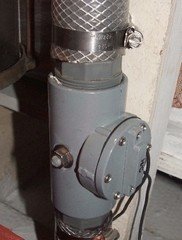Curious about the Groco strainer service alert. You can check them out at SSA Series - General Info. Basically a flow meter on the outflow side of the raw water strainer that alerts if the flow is reduced below a preset threshold. Anyone used anything like this?
At around $1000.00 and up for something like this it is pricey and I suspect a guy could design and install a home brew solution for quite a bit less. I found it because I was thinking "Gee, wonder if such a device exists ... I could make a million bucks if ..." Oh well, back to lottery tickets.
Anyone have experience with this type of device?
At around $1000.00 and up for something like this it is pricey and I suspect a guy could design and install a home brew solution for quite a bit less. I found it because I was thinking "Gee, wonder if such a device exists ... I could make a million bucks if ..." Oh well, back to lottery tickets.
Anyone have experience with this type of device?


